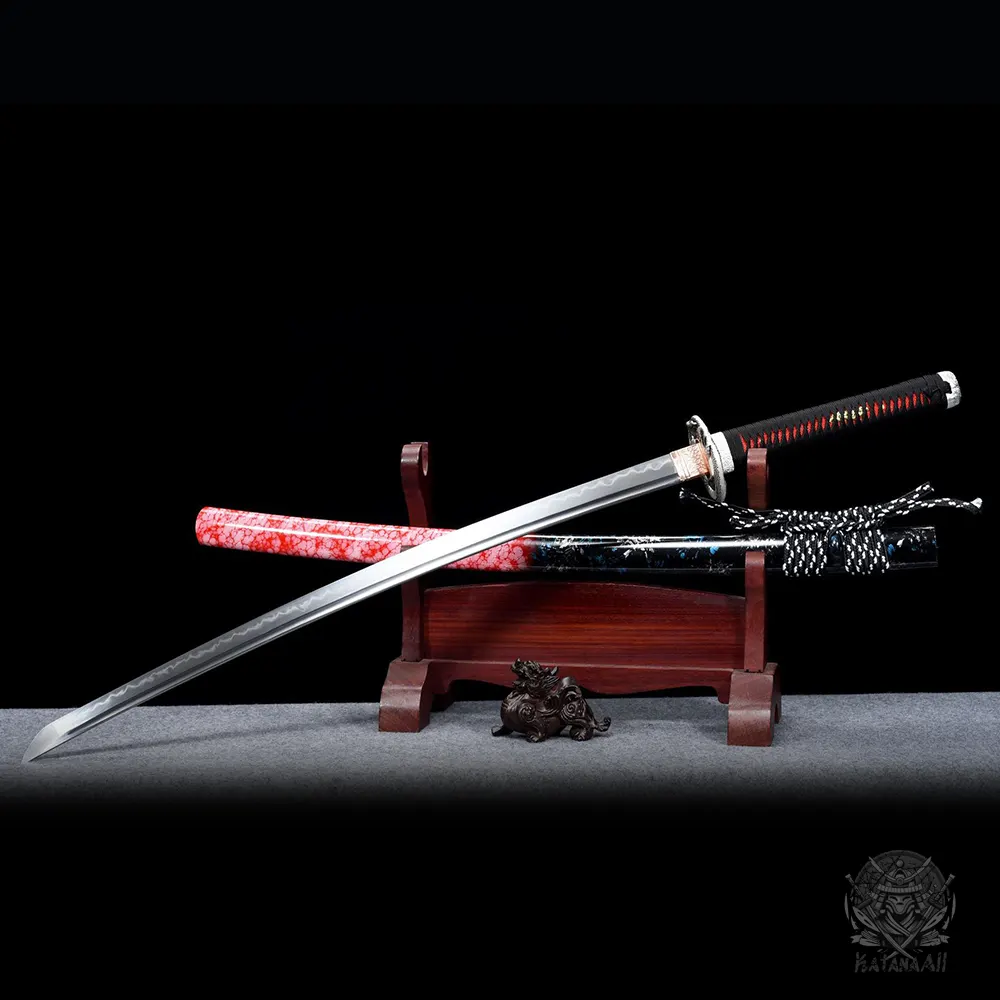
As global awareness of environmental sustainability continues to rise, industries across the board are seeking ways to minimize their ecological impact. The world of Katana crafting, steeped in tradition and cultural heritage, is no exception. Enthusiasts, collectors, and practitioners are now exploring eco-friendly alternatives for materials used in the crafting of Katanas. This shift not only reflects a commitment to environmental responsibility but also marks a fascinating evolution in the art of swordmaking.
Traditional Katana Materials and Their Environmental Challenges
Historically, the production of Katanas has relied on materials and techniques that, while exquisite, are not always environmentally sustainable.
Tamahagane: The Core of Traditional Katanas
Tamahagane, a high-carbon steel created from iron sand in a tatara furnace, is the cornerstone of traditional Katana craftsmanship. While the process is a masterpiece of ingenuity, it consumes significant resources, including charcoal for fuel, which contributes to deforestation and carbon emissions. The energy-intensive nature of smelting Tamahagane also raises concerns about its long-term environmental viability.
Exotic Hardwood Handles and Scabbards
The tsuka (handle) and saya (scabbard) of traditional Katanas are often crafted from exotic hardwoods. The harvesting of these woods can contribute to deforestation and habitat destruction. Unsustainable sourcing practices exacerbate these environmental issues, prompting a need for more eco-conscious alternatives.
Emerging Trends in Eco-Friendly Katana Materials
The growing demand for eco-friendly Katanas has led to the exploration of innovative materials and methods. These alternatives aim to preserve the artistry and functionality of traditional blades while reducing their environmental footprint.
Recycled and Repurposed Steels
Many modern swordsmiths are experimenting with recycled and repurposed steels. Using reclaimed metal not only reduces the demand for virgin resources but also lowers the energy required for production. Recycled steels can be crafted into high-quality blades that maintain the durability and sharpness expected of a Katana.
Sustainable Handle and Scabbard Materials
Eco-friendly alternatives to exotic hardwoods are gaining traction. Bamboo, for instance, is a rapidly renewable resource that offers strength and flexibility, making it an excellent choice for tsuka and saya construction. Other artisans are turning to composite materials made from plant-based resins or recycled plastics, which are both durable and environmentally friendly.
Plant-Based Lacquers
Traditional Katanas often feature lacquered finishes for their scabbards and handles. Eco-conscious swordsmiths are now using plant-based lacquers derived from sustainable sources, reducing reliance on synthetic chemicals and petroleum-based products. These natural lacquers maintain the aesthetic appeal and protective qualities of their traditional counterparts.
Low-Impact Production Techniques
Advancements in forging technology are also contributing to sustainability. Modern furnaces powered by renewable energy and efficient production methods minimize the carbon footprint of crafting Katanas. Some artisans are integrating solar or hydroelectric energy into their workshops, aligning their craft with environmental principles.
Benefits of Eco-Friendly Katanas
The shift toward eco-friendly Katana materials offers several advantages, benefiting both the environment and the sword community.
Environmental Conservation
By adopting sustainable practices and materials, the environmental impact of Katana production is significantly reduced. This helps preserve forests, reduce waste, and lower greenhouse gas emissions.
Ethical Appeal
Eco-conscious buyers are increasingly drawn to Katanas made with sustainable materials. These swords reflect a modern commitment to ethical consumption without sacrificing the artistry and performance of traditional craftsmanship.
Innovation in Swordmaking
The pursuit of eco-friendly materials has spurred innovation in the craft. Swordsmiths are exploring new techniques and materials, leading to exciting advancements that blend tradition with modern environmental responsibility.
Challenges in Transitioning to Sustainability
While the movement toward eco-friendly Katanas is gaining momentum, challenges remain.
Balancing Tradition and Innovation
The heritage of Katana crafting is deeply rooted in tradition, and some purists may resist changes to established methods and materials. Swordsmiths must strike a delicate balance between preserving historical practices and embracing sustainable alternatives.
Cost and Accessibility
Sustainable materials and methods can be more expensive, potentially making eco-friendly Katanas less accessible to budget-conscious buyers. As demand grows, economies of scale may help lower costs, making these swords more widely available.
The Future of Eco-Friendly Katanas
The rising demand for eco-friendly Katanas signals a promising future for sustainable swordmaking. As environmental awareness continues to grow, more artisans and buyers are likely to prioritize sustainability in their craft and consumption. This shift not only aligns with global efforts to combat climate change but also ensures that the art of Katana forging evolves responsibly for future generations.
Conclusion
The move toward eco-friendly Katana materials represents an inspiring fusion of tradition and sustainability. By embracing recycled steels, renewable resources, and low-impact production methods, swordsmiths are preserving the beauty and functionality of Katanas while honoring their responsibility to the environment. Whether you’re a collector, martial artist, or enthusiast, choosing an eco-friendly Katana allows you to celebrate this timeless art form while supporting a greener future.
